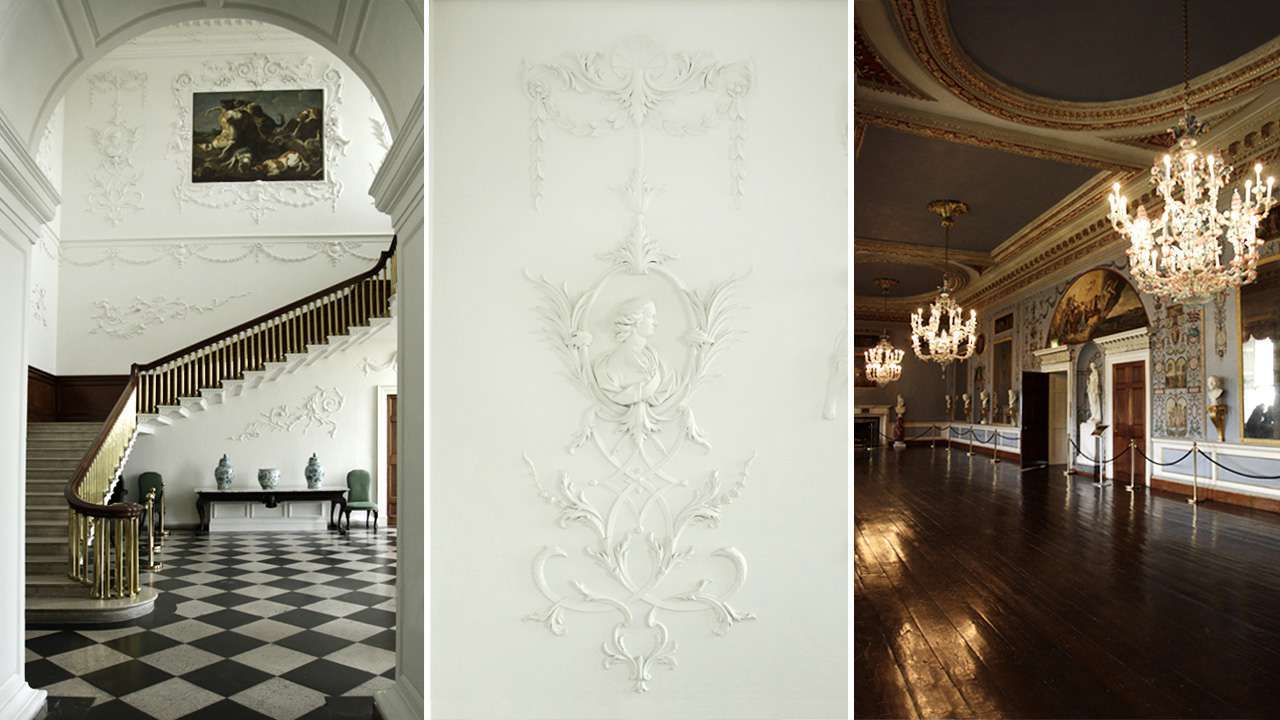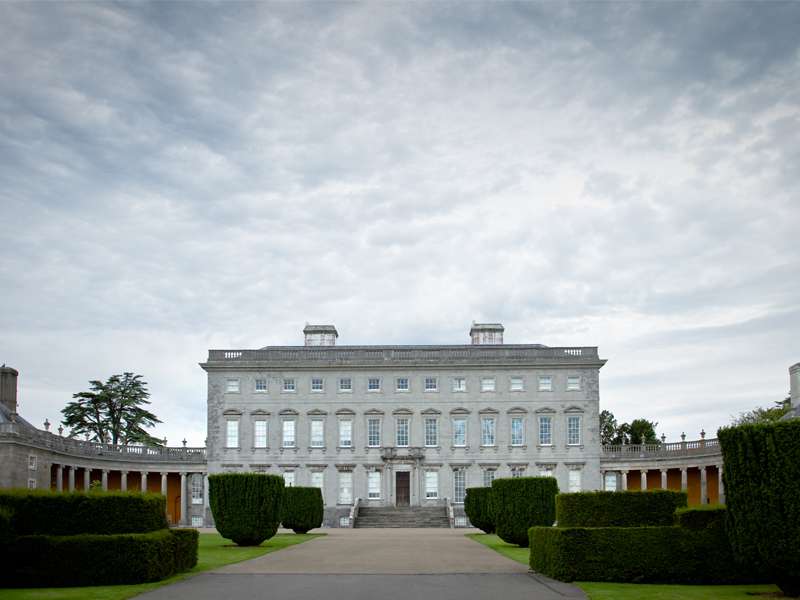Classical Style
However, it was during what is now known as the Enlightenment, that some of the county's finest planed homes appeared which appeal to the aesthetics of beauty over those of defence or practicality in their ploy to impress. The Enlightenment saw European artistic and intellectual endeavour turn towards science and rationalism under the influence of Greek and Roman texts. This in turn was reflected in an architecture of carefully planned and proportioned structures heavily influenced by the classical world and the work carried out by the Italian Renaissance Architects.
Of these architects one in particular, Andrea Palladio, was to be highly influential in shaping the homes of the powerful and wealthy. His style of fine domestic architecture highly influenced by classical Rome and Greece was to spread across Europe and forever be associated with him through the term used to describe these houses “Palladian”. This style was introduced into Ireland in the form of Castletown House, which began construction in 1722.
The Speaker Conolly
Ireland's largest and oldest Palladian house, Castletown, was completed in 1729 to a design attributed to the Italian architect Alessandro Galilei. The house was commissioned byThe Speaker Conolly, William Conolly, the speaker of the Irish House of Commons. Conolly was not born into the aristocratic class, but was of humble origins in Co. Donegal. However, by his death in 1729, he was reputed to be Ireland's wealthiest man. The house remained in the ownership of his descendants until 1965 when it was sold off to a developer. Fortunately, Desmond Guinness, founder of the Irish Georgian Society, bought the house to ensure it's preservation in 1967 along with 120 acre portion of it's original domain, for £93,000.
Castletown House, Celbridge
Castletown House, Celbridge, was built in 1722 for ‘Speaker’ William Conolly, the speaker of the Irish House of Commons from 1715. It was designed by the famous Italian architect Alessandro Galilei (1691-1737), and it remains the only house in Ireland designed by him.
Picture of Castletown HouseThe only Irish Palladian house to have been built with the correct classical proportions, it is said to have influenced the design of the White House in Washington. Catherine Conolly, widow of the great ‘Speaker’, continued to live in Castletown until her own death in 1752. Castletown was then inherited by her nephew William. He died just two years later and the house was inherited by his son Tom Conolly. ‘Squire’ Conolly, as he was known, married Lady Louisa Lennox, daughter of the Duke of Richmond in 1758. Louisa was only fifteen years of age at the time. The ‘Print Room’ dated c.1765 is attributed to Louisa. It is the only print room in Ireland to have survived. The fashion of print rooms originated in England and consisted of engravings and mezzotints being pasted onto the wall and framed with decorative borders.
In 1965, Castletown was put up for auction by Lord Carew, whose mother was a member of the Conolly family. It was bought by speculators who, after obtaining permission from Kildare County Council, built a modern housing estate beside the avenue of Castletown House. In 1967 Desmond Guinness bought the house and made it the headquarters of the Irish Georgian Society. The house was opened to the public. Money was spent on restoration and refurbishment of Castletown, which had lain empty and decaying for two years.





